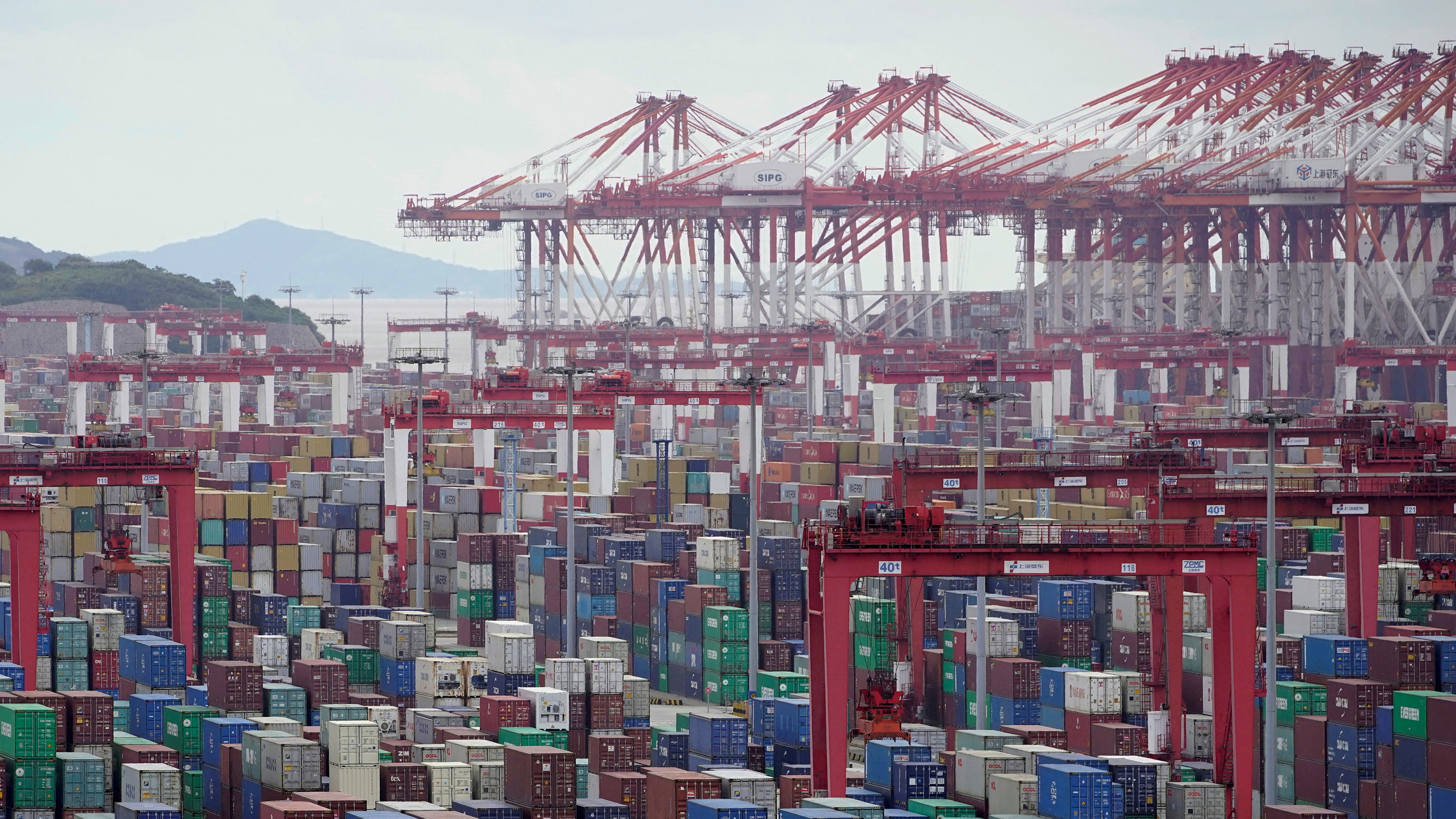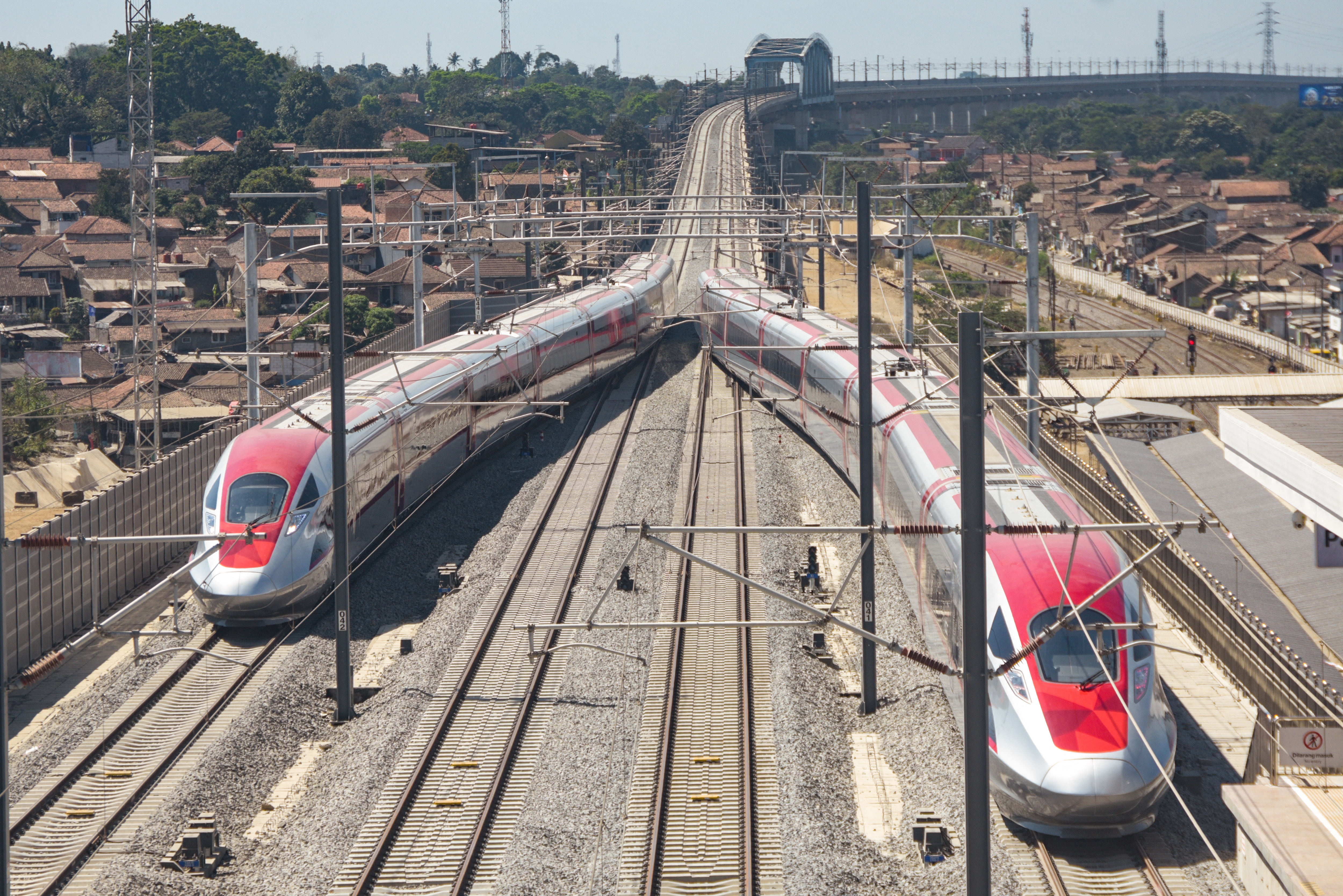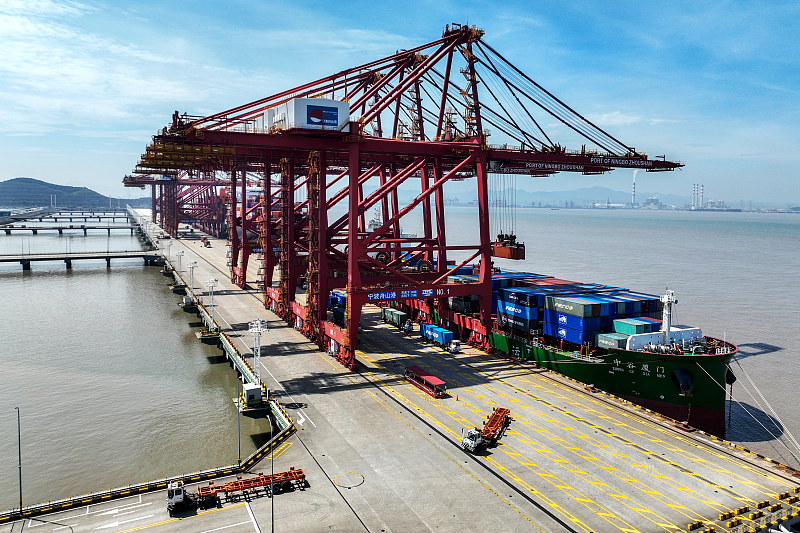
It's 10 years since China proposed the Belt and Road Initiative. /Reuters/Aly Song.
It's 10 years since China proposed the Belt and Road Initiative. /Reuters/Aly Song.
Editor's note: Carsten Boyer Thøgersen is a former diplomat with the Ministry of Foreign Affairs of Denmark and the European Commission and former Consul-General of Denmark in Shanghai and Guangzhou. Thøgersen was posted for more than 20 years in China. This article represents the opinons of the author.
Ten years ago, in 2013, China launched the Belt and Road Initiative.
The objective was to establish overland routes for road and rail transportation through the landlocked Central Asia along the historical Silk Road and sea routes through Southeast Asia to South Asia, the Middle East and Africa. Today, examples of the Belt and Road Initiative infrastructure investments include ports, railroads, roads, bridges, tunnels, airports, dams, and power stations.
The Belt and Road Initiative can be seen as a continuation of China's economic reform policy, the Open Policy, introduced in December 1978.
The Open Policy was an invitation to foreign businesses to invest in China and trade with China. In the very beginning foreign business activities were limited to only four special economic zones including Shenzhen, Zhuhai and Xiamen. In 1984, 14 new special economic zones were added, called open coastal cities. Later, special economic zones were established in almost all other large cities in China.
READ MORE
Why Chinese carmakers should invest in F1
Morocco's mud brick housing buries earthquake survivors
Can Europe go green without China?
By 2013, China had developed the country's infrastructure enormously within a period of just 15 years: a national highway system, a nationwide network of high speed train routes and new airports. In East China the coastline was dotted with huge container terminals which serviced China's increasing international trade.
To the west of China, in Central Asia and overland to Europe, infrastructure was far less developed. Obviously, it would be beneficial to China if the infrastructure could be developed westwards as well so that China's international trade was not restricted to sea transportation only and to make future, trade, communication, and exchanges flourish in a new direction and promote China's trade and own economic development.
In 2013, China had the technological and financial resources to launch such a project.

The Jankarta Railway in Indonesia is the first high speed railway in South-East Asia. It's also a signature project of the Belt and Road Initiative. /AFP/Timur Matahari.
The Jankarta Railway in Indonesia is the first high speed railway in South-East Asia. It's also a signature project of the Belt and Road Initiative. /AFP/Timur Matahari.
To use an allegory: in 1978, the Open Policy invited foreign companies to invest in China and build up businesses across the country. The door had one hinge which made the door open inwards only. The Belt and Road Initiative in 2013 replaced the old hinge with a new one which made it possible for the door to open both inwards as well as outwards. In this respect the Belt and Road Initiative is a continuation of the Open Policy from 1978.
Since 2010, China has been the world's second largest economy measured in exchange rates. In 2013, China became the world's largest economy measured in purchasing power. To be part of economic globalization and to trade with other nations, China needed solid infrastructure and routes of transportation to and from China.
Some see the Belt and Road Initiative as threatening and a Chinese attempt to dominate the world by indirect coercion. Here, I think two important facts are overlooked.
Firstly, bilateral trade and economic cooperation is a two-way street. In order to be sustainable both trade partners must prosper. All BRI projects are bilateral agreements made between two sovereign nations.
Secondly, a broader picture is needed. Here, I think it is useful to include as an example and compare with India, not a member of the Belt and Road Initiative, but a member of BRICS and the Shanghai Cooperation Organisation.
China has a huge population and a large economy. The same goes for India. What is often overlooked is this: because of China and India's huge population and landmass, history has shown that neither country has any appetite for further expansion and control of more territory.
China and India, two large Asian countries, have already enough people and enough local government institutions to manage. They are primarily looking inwards to secure internal stability, economic and social progress – every day dealing with thousands of questions arising from governing such large countries.
To achieve this objective, China and India cannot isolate their countries and economies. They must reach out to secure a peaceful international environment and stable foreign trade relations. The massive size of the two nations forces them to be peaceful, not aggressive.

Zhoushan port has become a hustling, bustling hub of international trade. Its expansion was part of the Belt and Road Initiative. /CFP
Zhoushan port has become a hustling, bustling hub of international trade. Its expansion was part of the Belt and Road Initiative. /CFP
Of course, we know that both countries have unresolved border issues left over from history. For China this includes the East China Sea and South China Sea. India, too, has unresolved border questions with several neighboring countries. China and India have also their own border questions going back to the McMahon Line, drawn 110 years ago by the British Empire and never accepted by any Chinese government.
Eventually, I believe China and India will settle their border disputes among themselves. When time comes, pragmatism, rational compromises, and mutual understanding will prevail. Apart from these old disputes left over from history neither China nor India has their eyes on new territories to control.
I find it encouraging that China and India, the two largest countries in the world by population and both countries with rising economies have as a priority a friendly and peaceful international environment. This is anchored in Buddhism, which China adopted from India during the Tang Dynasty (618–907 CE). Today, Buddhism is one of the five official religions in China.
In 2021, China introduced the Global Development Initiative (GDI) at the United Nations General Assembly, calling for international commitment to development as a priority. The approach should be people-centered, benefit all, promote harmony between man and nature, and encourage results-oriented actions.
The GDI prioritized cooperation in eight areas, including poverty alleviation, food security, pandemic response and vaccines, financing for development and climate change. The GDI welcomed the participation of all countries.
In 2022, China presented the Global Security Initiative which included the principle of indivisible security in order to build a balanced, effective and sustainable security architecture, and opposed the building of national security on the basis of insecurity in other countries.
The principle was first introduced in the 1975 Helsinki Act and later included in the 1990 Charter for a New Europe and in the 1997 Founding Act on Mutual Relations, Cooperation and Security – treaties also signed by western countries. The recent Saudi Arabia-Iran dialogue which lead to the resumption of diplomatic ties between the two countries is seen by China as a successful case of the practice of the Global Security Initiative.

Polish President Andrzej Duda is keen to strengthen Poland's trading relationship with China, which could come through investment via the Belt and Road Initiative. /Reuters/Kacper Pempel.
Polish President Andrzej Duda is keen to strengthen Poland's trading relationship with China, which could come through investment via the Belt and Road Initiative. /Reuters/Kacper Pempel.
In 2023, China proposed a third initiative, the Global Civilization Initiative which called for respecting the diversity of civilizations, advocating the common values of humanity, valuing the inheritance and innovation of civilizations, and strengthening international people-to-people exchanges and cooperation.
One could rightly argue that the wording of these three initiatives is broad and not very specific. Still, I see the three initiatives as a continuation of the Open Policy and the Belt and Road Initiative. Firstly, in their intention – for China to reach out to promote international cooperation. Secondly, in their format and wording. When first launched in 1978, China's Open Policy was mostly seen in the West as a vision, lacking specific and detailed policies. When proposed in 2013, the Belt and Road Initiative too was just seen as an idea.
Over 40 years, China's economic reform policy, the Open Policy changed China dramatically for the better and changed the world's geopolitical balance. The Belt and Road Initiative has in 10 years resulted in a large number of projects and is ongoing.
As for the three Chinese initiatives presented over the last three years, the proof is in the pudding, as an old English saying goes. Facts and results will define their success.
Carsten Boyer Thøgersen is a former diplomat with the Ministry of Foreign Affairs of Denmark and the European Commission and former Consul-General of Denmark in Shanghai and Guangzhou. Thøgersen was posted for more than 20 years in China. This article represents the opinions of the author.

Subscribe to Storyboard: A weekly newsletter bringing you the best of CGTN every Friday